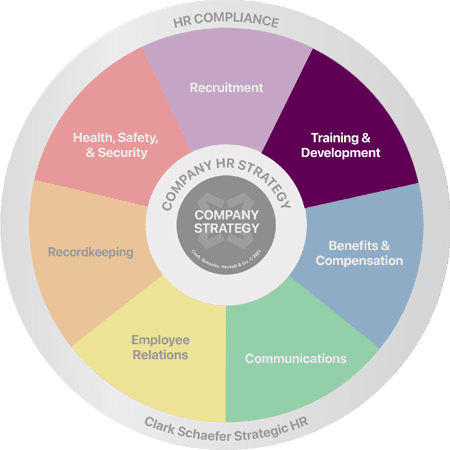How can I make our training more effective?
(Updated July 2020)
HR Question:
We conducted training recently, but it didn’t seem like anyone got anything out of it. What can we do to make the training more effective for our team?
HR Answer:
There are a number of reasons why training turns out to be ineffective, most of which can be addressed in the planning stages. Most importantly is to consider the needs of your audience. When evaluating training content be sure to look at:
Topic
Is your topic relevant to the participants, timely, and is new information provided? All of these are important. If you make every employee attend a seminar on benefits, when only 25% are eligible, that may not be the best use of time and resources. At the same time, offering the presentation three months before open enrollment would also be problematic (too far ahead). Consider the needs of your audience, and how a topic can be tailored to meet those needs.
Learning Styles
Everyone learns differently, whether auditory, visual or kinesthetic, and it is important to tailor a presentation to accommodate different learning styles. A combination of lecture, discussion, and activity can enhance the learning experience for everyone, and it is more likely to lead to better information retention.
Group Size
Depending on the topic, the group size may impact how effective training is. If you are discussing a topic with complex detail that participants will need to know and understand, breaking into smaller groups will give them more opportunity to ask questions and gain the insight they need.
Length of Presentation
The length of a presentation can dictate how in-depth you may be able to explore a topic. Determine what you are trying to accomplish with the training – just a broad overview, or a deep dive? That will dictate how long training should be. Conversely, if you know you only have 30 minutes, don’t pick a larger topic than you can cover effectively in that amount of time.
Needs Assessment
It is critical to match the training to the needs of the organization. While there is no one-size-fits-all formula for determining training needs, a needs assessment can be of great value on all levels to aid in doing so.
Timeliness
Timeliness is also important. If there is a deadline to implement a new process or policy, make sure the relevant employees are trained well in advance of that deadline, to allow time to address any questions or concerns.
Evaluation
This is a critical piece that should be built into the conclusion of all training. It’s important to assess how effective your training is from your employees’ perspectives. You can use this evaluation to assess their satisfaction with the training delivery, content, timeliness, and any other aspect of the experience on which you would like to gain feedback. You can also use the evaluation to briefly test their knowledge of your critical message to determine if they are indeed walking away with the information you had intended.
Finally, try to provide coverage while an employee or employees are attending training. This will help ease the stress of being away from the job. For more tips, check out the Top 10 Time Tips for Trainers.
For any organization, training is an investment in time, money, and resources. It can also be a tool for retention and rewards as well. Make sure you plan carefully for the audience’s needs to get the most bang for your buck!
During the pandemic, many organizations find themselves operating at different levels than their norm. If your team currently has a lighter workload, this can be a prime opportunity to provide training in areas you may have put off (i.e., workplace harassment, diversity, coaching, skills-specific). Strategic HR can help you in developing customized training to achieve your desired results, and we can lead both in-person and virtual training for you. For more information, visit Training & Development, or simply contact us – we’d love to hear from you.


